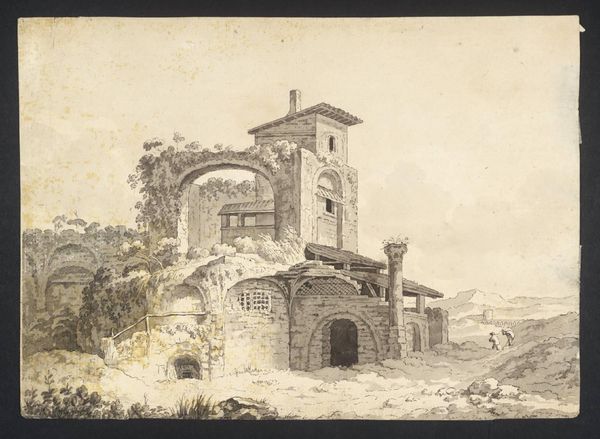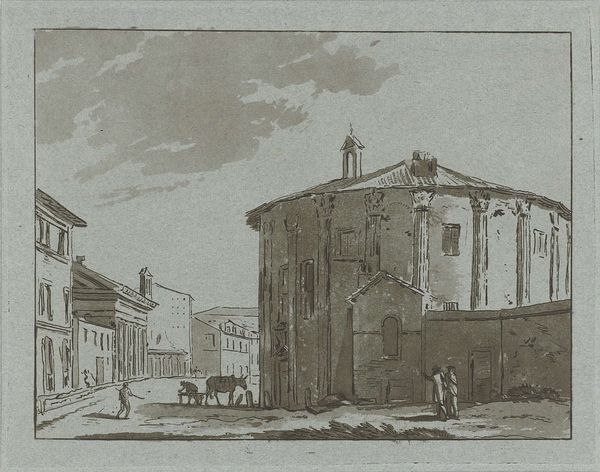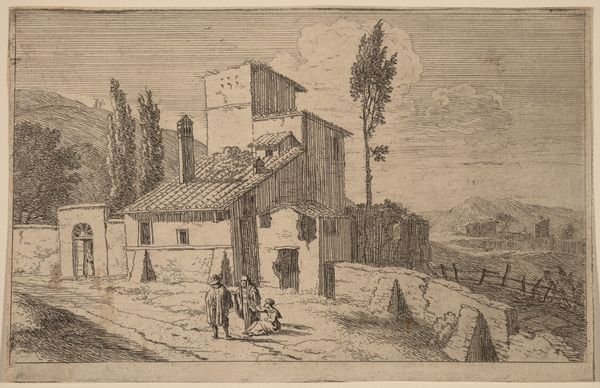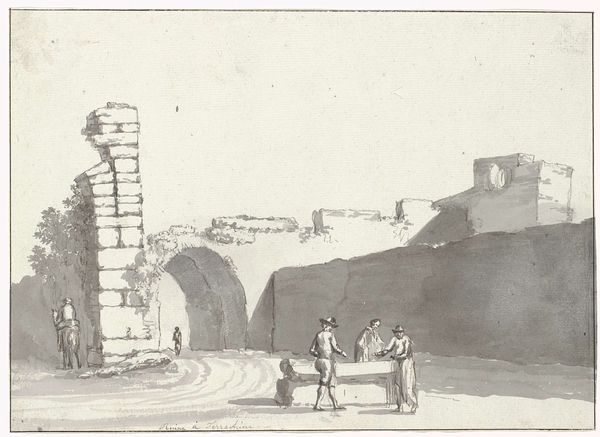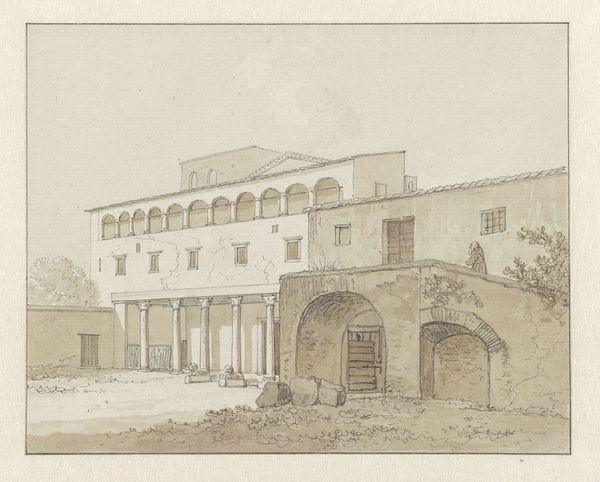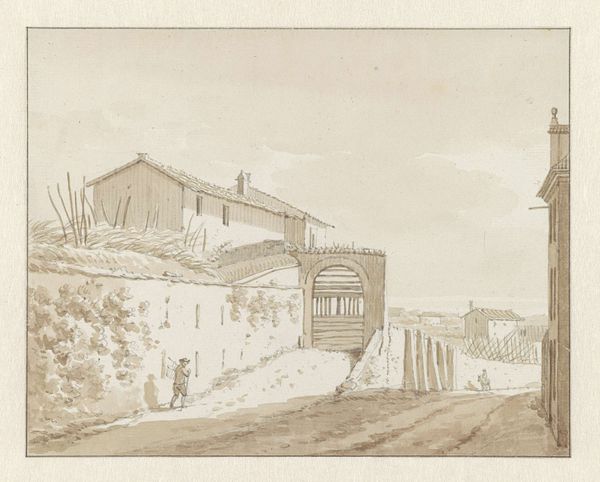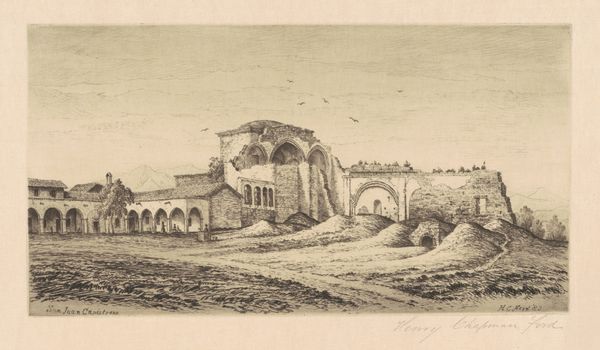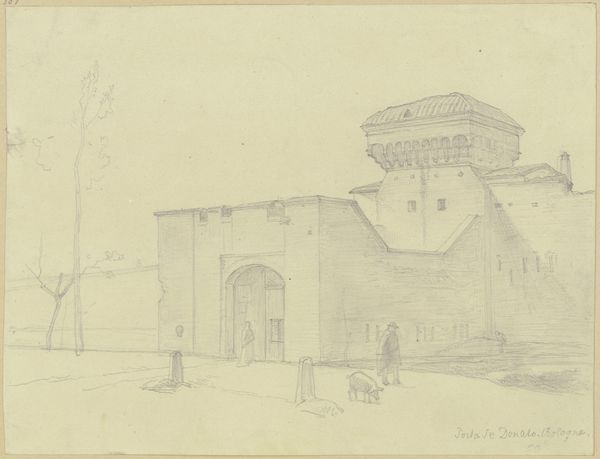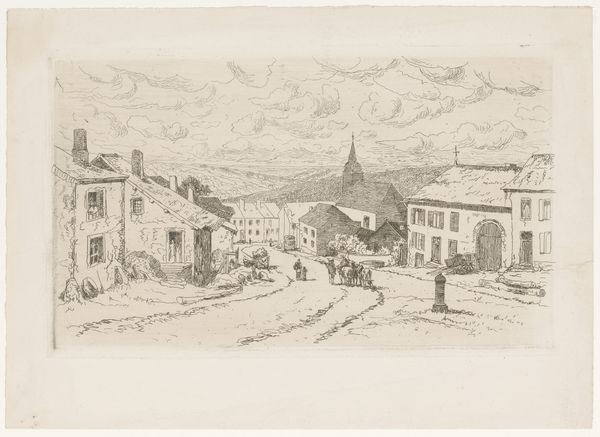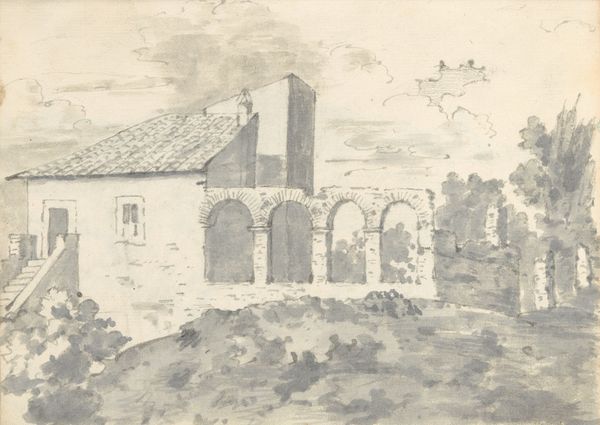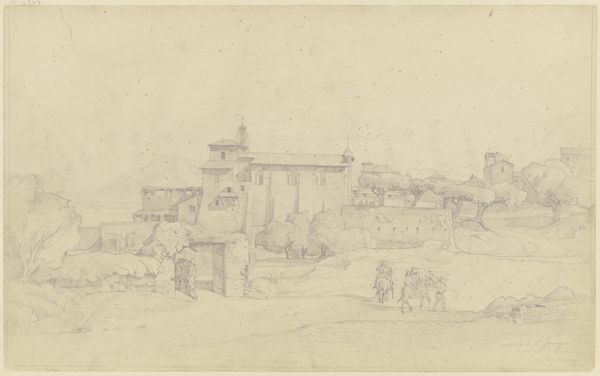
drawing, pencil, graphite
#
drawing
#
pencil sketch
#
landscape
#
pencil
#
graphite
#
cityscape
#
realism
Dimensions: sheet: 6.9 × 13.3 cm (2 11/16 × 5 1/4 in.)
Copyright: National Gallery of Art: CC0 1.0
Curator: This is "Fort Marion, Florida," a graphite and pencil drawing created around 1874 by James Wells Champney. Editor: My first impression is of a quiet, almost ghostly cityscape, dominated by the stark geometry of the fort. There's a certain solemnity to the muted tones and precise lines. Curator: It's fascinating how Champney uses the medium to convey that solemnity. The texture of the paper itself becomes a crucial element, contributing to the overall feeling of age and perhaps, even a little bit of neglect. The very process, the marks of the graphite, speaks to the historical weight of the place, considering what it has been witness to, namely its role in the oppression and genocide of Indigenous people. Editor: Absolutely, and formally, the composition draws the eye towards that central archway, a dark void that both divides and connects the two halves of the fort. Semiotically, this divide signifies a rupture within this history and place. Curator: Right. And what interests me are those conical piles in the foreground, they seem so purposefully constructed. Almost like manufactured artifacts to fortify a space meant to be unconquerable. How were these supplies secured? What type of labor went into piling the loads in the same manner as cannonballs? Editor: True, these conical stacks do anchor the foreground while leading our sight deeper into the plane, in contrast with the darker architectural elements. Speaking to the texture itself, the lines are not entirely uniform, suggesting a tactile, imperfect materiality of labor and struggle. Curator: Indeed. Even the realism seems somewhat selective. There’s such exacting detail in some parts, contrasted by areas where Champney relies more on suggestion than precise representation. What might those decisions indicate? Editor: Perhaps Champney aimed to evoke a particular mood rather than offer a documentary depiction of Fort Marion, suggesting his response to bearing witness to this space. Curator: Ultimately, a fascinating interplay between process and subject matter. It challenges us to consider what has taken place here by focusing on the historical and colonial traces left behind on the materials. Editor: It does, and in doing so, draws our eye deeper to recognize its composition and reflect on what may linger beyond its stoic structure.
Comments
No comments
Be the first to comment and join the conversation on the ultimate creative platform.
